Places Where Swimming With Whales is Safe and Fun
Have you ever wanted or had a dream of swimming with whales, stunned by their extremely huge size yet attracted by their lovely grace?
I was elated when I got to know that it was possible to swim with humpback whales in their natural habitat. I’ve always admired animals, especially marine life, and any encounter with them leaves me amazed. So swimming with them in the wild sounded like an unforgettable experience.
Its once-in-a-lifetime experience and sometimes a coincidence. Imagine the scene; you are swimming in crystal-clear water and a humpback whale glides nearby to play with you. This isn’t a nature documentary or a movie scene; it’s the unforgettable adventure of swimming with whales.
Don’t limit yourself to a boat tour. Swimming with whales is a wonderful opportunity to enter their world and witness their gigantic power and delicate beauty. This isn’t just an adventure; it’s a chance to create a deeper connection with these magnificent creatures and the ocean environment they call home.
Best Locations for Swimming with Whales
Hawaii: The Gathering Place for Whales
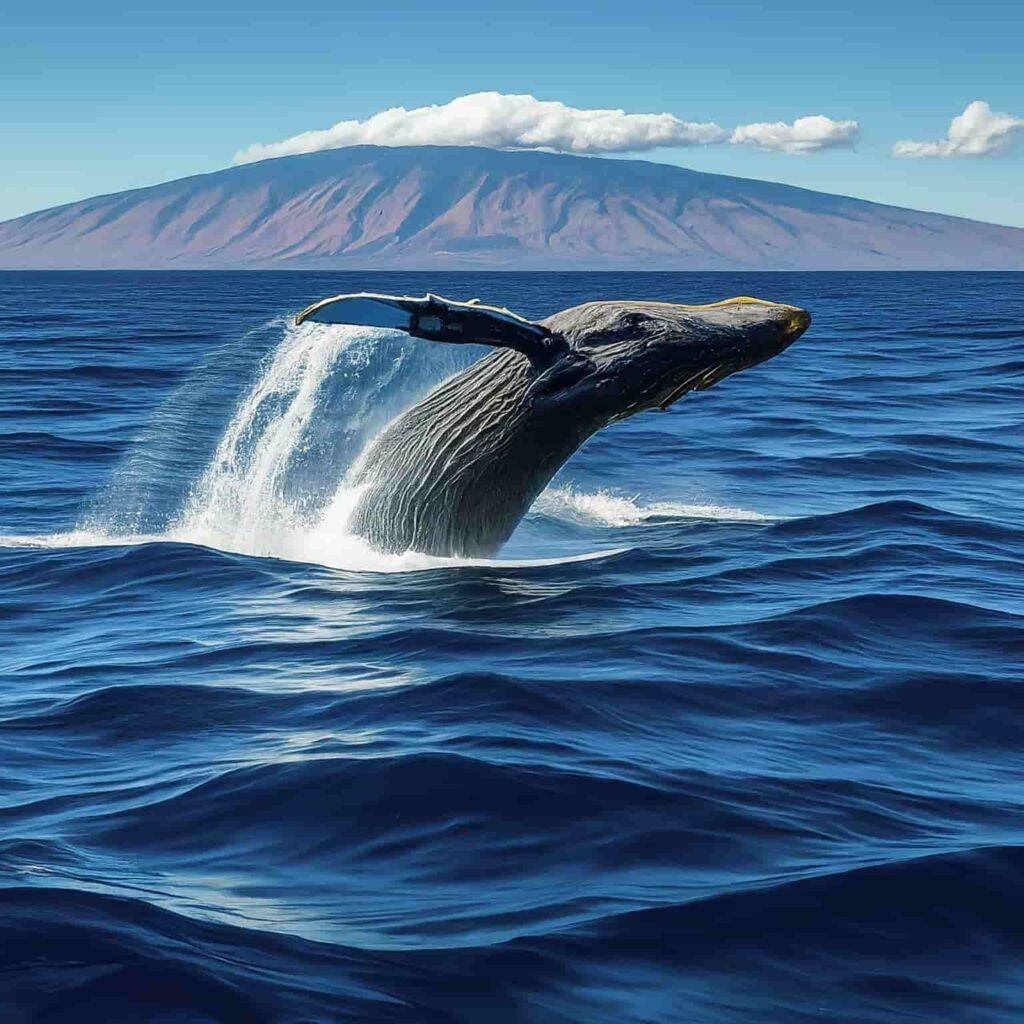
Hawaii is eminent for its crystalline waters and manifold marine life, declaring it an ideal destination for swimming with whales. The water temperature in summer is often as high as 28 C (82 F), but in winter it drops to as low as 22 C (72 F).
From December to April, Humpback whales relocate to the warm waters of Hawaii to breed and nurse their young ones, providing plenty of opportunities for unforgettable encounters.
Tonga: Up Close and Personal with Humpbacks
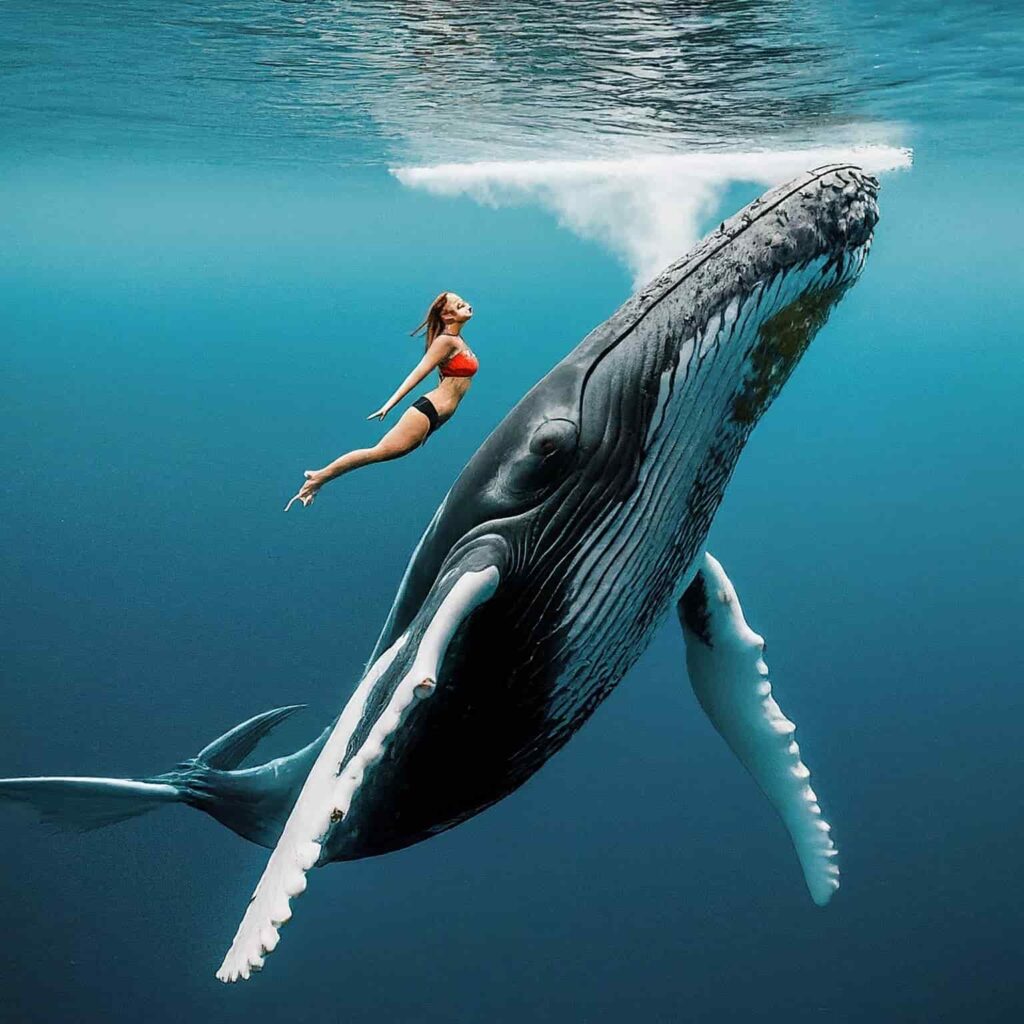
Tonga is one of the best places in the world where visitors can swim with humpback whales in their natural environment. With strict regulations to ensure the safety of both whales and humans, Tonga offers a unique and intimate experience with these majestic creatures.
The average water temperature in Tonga during whale season is 75 ℉. Most people swim with a 3mm wet suit. Air temperatures stay in the mid-70s F, but it can be windy.
Norway: Witness the Majesty of Orcas
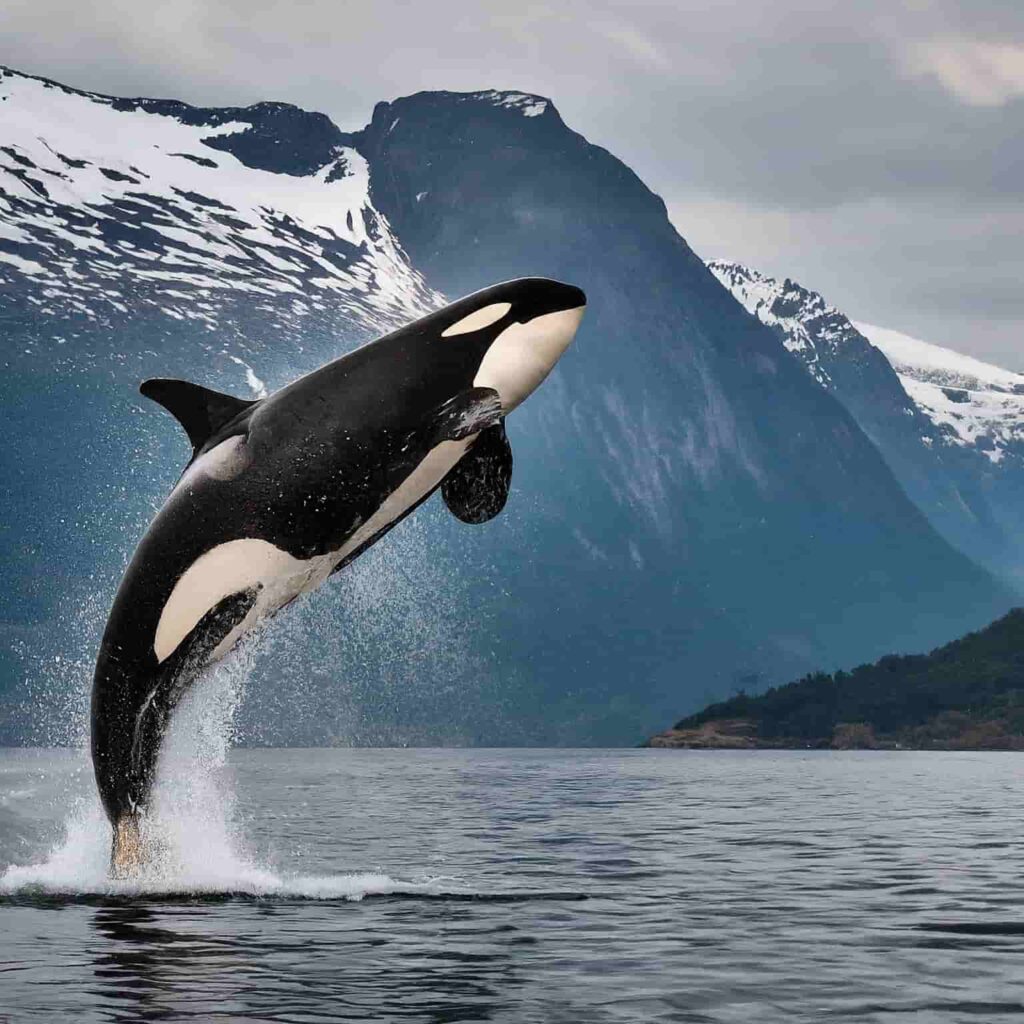
Norway’s diverse and uneven coastline and nutrient-rich healthy waters attract a variety of whale species, including the iconic orcas. The most suitable time for swimming with orcas in Norway is between November and January.
Known for their striking power, black-and-white color and outstanding hunting techniques, orcas can be dangerous and may attack humans, there are several incidents of orcas attack every year, so visitors must take safety precautions before diving into the water.
Swimming with orcas in Norway offers an unparalleled glimpse into the lives of these wild carnivores.
Explore Marine Life: Best Place to Snorkel in Cozumel (Scuba Diving, Marine Life)
Whale Species You Can Swim With
There are many species of whales, such as Blue Whales, Fin Whale, Humpback Whale, Bowhead Whale, Right whales, Sperm Whale, Orca, Beluga Whale, and Porpoises, but swimming with all species is not possible because they can be dangerous, even their soft touch can kill humans.
Humpback Whales: Graceful Giants of the Ocean
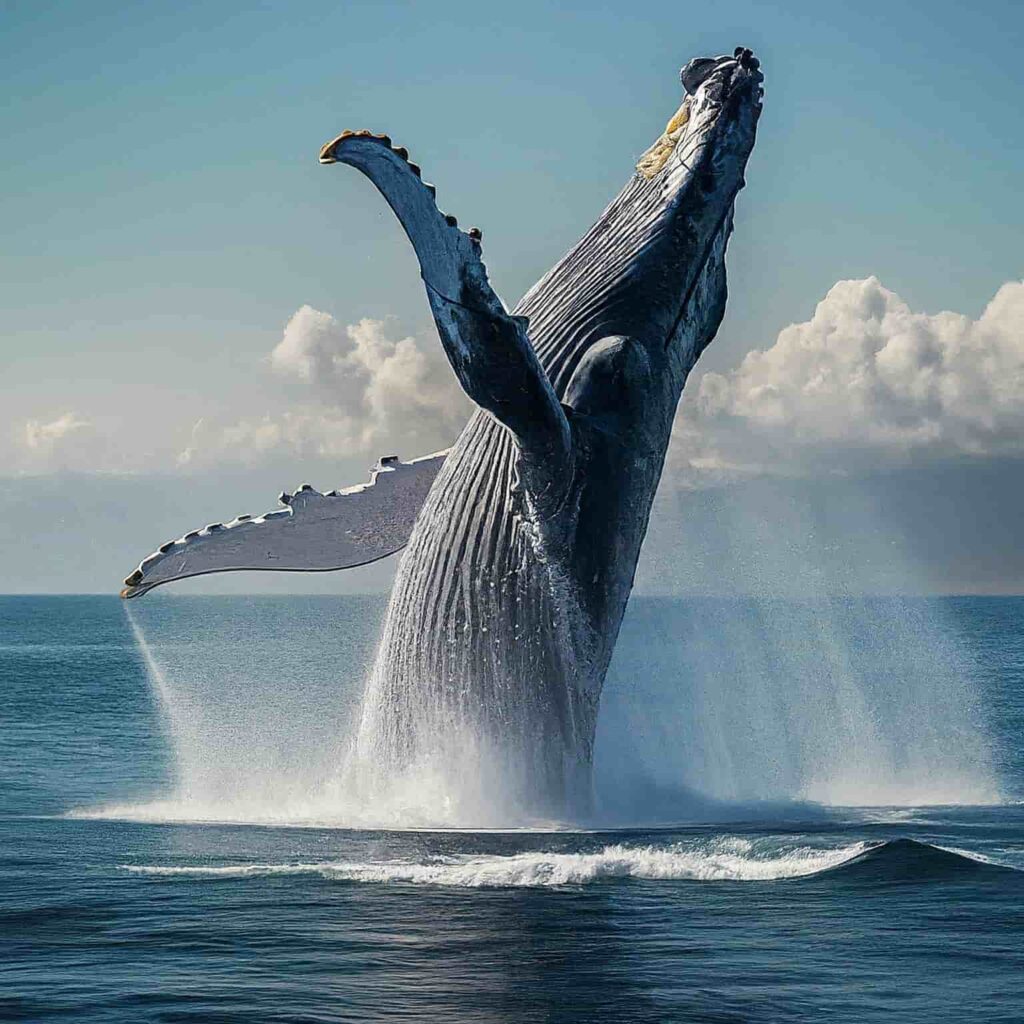
Humpback whales are the happiest sea residents known for their acrobatic displays and weird songs, making them a popular choice for swimming with whales experiences. You can easily recognize them by their large, clumsy body, long flippers, flat heads, and typical fluked tails.
Humpback whales can live probably 40-50 years and weigh around 30,000 kilograms. These gentle giants can be found in tropical and sub-polar waters, offering opportunities for close encounters.
Orca Whales: The Apex Predators of the Sea
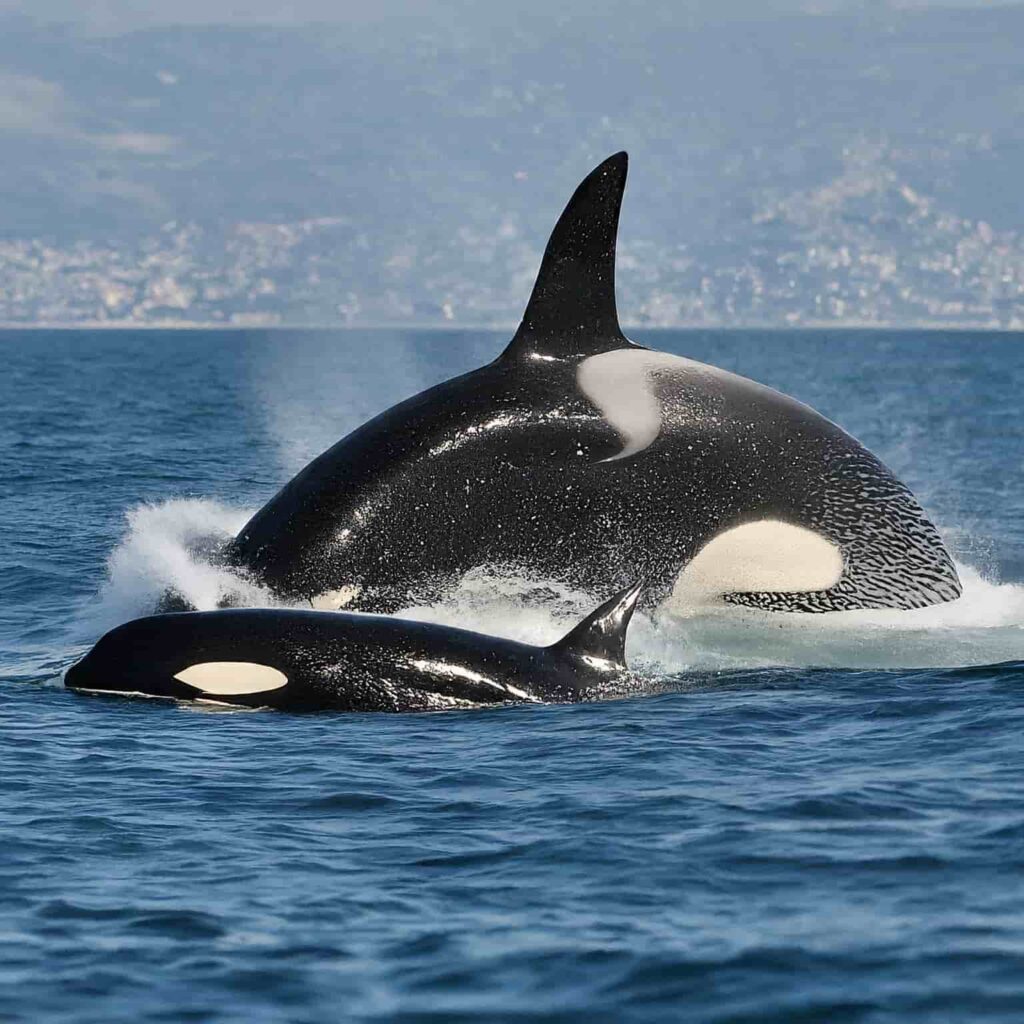
Orcas, the killer whales, are highly intelligent and social creatures that live in all oceans. An average adult orca can be 23-32 feet long and weigh up to 6 tons or 5,500 kg.
While swimming with orcas can be a life-threatening experience, it’s compulsory to approach them with safety precautions and during the calm season, as they are powerful huge predators with complex social structures.
The Beluga Whales: Delphinapterus Leucas

The beluga whale, also known as the white whale, lives in the Arctic and sub-Arctic waters. It is the only member of the genus Delphinapterus.
Beluga whales are very social animals and live in pods. They use a wide range of sounds to communicate with each other, including clicks, whistles, and chirps.
Beluga whales are medium-sized whales sized 4-6 feet and weigh up to 3000 kg.
Destination Alert: Hot Springs in Washington | Relaxing Escape & Natural Beauty
Ethical Considerations and Guidelines
Importance of Responsible Tourism
Responsible and respectable tourism is essential when swimming with whales to minimize disturbance to their natural behaviors and habitats.
Visitors must read and follow the guidelines set by local authorities and conservation organizations to ensure the safety of both whales and humans.
Regulations for Swimming with Whales
Each destination has its own charm and set of regulations governing interactions with whales and other marine animals.
These regulations typically include maintaining a safe distance from whales, abstaining from touching or feeding them, and minimizing noise and disturbances to avoid animal abuse.
Benefits of Swimming with Whales
Emotional and Psychological Impact
Swimming with whales can have heartfelt emotional and psychological relaxing effects, stimulating feelings of awe, humility, and connection to nature.
Many people describe the experience as life-changing, inspired by marine life, and a desire to protect it for future generations.
Contribution to Conservation Efforts
Participating in responsible whale-watching tourism helps generate revenue for local communities and supports marine conservation initiatives.
By indicating the economic value of whales in their natural habitat, tourism helps take conservation measures to protect these vulnerable priceless species.
Find Whales in CORSICA
Preparing for the Experience
Safety Precautions and Equipment
Before swimming with whales excursion, you must attend safety briefings and learn proper use of snorkeling gear and other equipment. Wearing a wetsuit and fins can enhance floating and mobility in the water, ensuring a safe and enjoyable experience.
Understanding Whale Behavior
Understanding whale behavior can amplify the swimming experience and increase the likelihood of meaningful interactions.
Knowing how to interpret signs of danger, aggression, distress, or curiosity can help visitors react appropriately and maintain a respectful distance from sea creatures.
Challenges and Risks
Weather Conditions and Seasonality
Weather conditions and seasonality can affect the suitability of swimming with whales. Rough seas, strong currents, and bad weather can be a potential risk to safety.
It’s essential to check weather forecasts and plan visits during the best conditions to alter the risk of accidents or cancellations.
Dealing with Unexpected Situations
Unexpected situations can arise during swimming with whales adventure, such as equipment malfunctions, medical emergencies, or encounters with aggressive wildlife.
Being vigilant and following the protocols of experienced guides and instructors can help minimize risks and ensure a safe outcome.
Tips for a Memorable Experience
Patience and Respect for Wildlife
Patience is the main factor when swimming with whales, as encounters with these animals can be sudden and may require the right moment to approach or observe them. Respecting whales’ natural behavior and boundaries is essential to avoid causing stress or disturbing their daily pattern.
Photography and Capturing the Moment
Waterproof cameras or GoPro can enhance the swimming with whales experience by allowing visitors to capture stunning photos and videos. Prioritize the well-being of the animals and avoid using flash photography or getting too close for the sake of a perfect shot.
Personal Experiences and Testimonials
Stories from Adventure Seekers
Many people who have had the chance to swim with whales describe it as a wonderful experience that leaves a lasting impression.
From the wish of being in the water with these magnificent creatures to the profound sense of awe and wonder on encounter, the memories created during these encounters are cherished for years to come.
How Swimming with Whales Changed Lives
For some individuals, swimming with whales is a transformative experience that sparks a passion for marine conservation and environmental protection.
By making a connection to the ocean and its inhabitants, these experiences inspire people to become advocates for marine protection and preservation.
Future of Whale Watching Tourism
Sustainable Practices for Long-term Enjoyment
The future of whale-watching tourism depends on accepting sustainable practices and prioritizing the take care of whales and their natural habitats.
By eco-friendly initiatives, minimizing environmental impacts like global warming, and implementing community charge, we can ensure that future generations can continue to enjoy the magic of swimming with whales.
Innovations in Responsible Tourism
The latest technology and innovative approaches to responsible controlled tourism can secure future of whale watching.
From eco-friendly boat designs and innovative vigilance techniques to virtual reality experiences and educational awareness, there are endless possibilities for enhancing the sustainability and accessibility of whale-watching tourism.
Learn More About Whales
Conclusion
Swimming with whales allows one to connect with nature, nurture an appreciation for marine life, and contribute to conservation efforts. By following ethical guidelines, prioritizing safety, and embracing sustainable practices, participants can enjoy unforgettable encounters with these majestic creatures while ensuring their protection for generations.
FAQs
Is it safe to swim with whales?
Humpback whales are the most gentle and considerate animals in the world, despite their size. If you are respectful to the whales and follow protocols, it is quite safe. Whale swimming is done under the guidance of a licensed guide and captain.
What is the best place to swim with whales?
Blue Whales, Mirissa, Sri Lanka.
Dwarf minke whales, Port Douglas.
Humpback whales, Tahiti.
Humpback whales, Tonga.
Orcas, Tromso, Norway.
Are whales friendly?
According to modern research it shows us that whales are and always have been typically a friendly species. Today, when whales are spotted, their relationships with humans are friendly, social, and inquisitive.
Do whales like to be pets?
Whales are very friendly and easy to touch, Swartz says: “They love to rub and touch.”
Destinations Waiting for You
NORTHERN SPAIN – Rich Culture, Peaks, Beaches & Festivals
CALIFORNIA HOT SPRINGS – Warm Spirit Healing Baths
Most Expensive Hotels in Chicago-Luxury Awaits
Best Hikes in Sedona | Red Rock Magic & Ancient Wonders
Top 5 Tourist Attractions in Maldives – Dive, snorkel, Relax
Best Places to Visit in March in Europe-Comprehensive Guide
Hot Air Balloon Ride in San Antonio | Soar Above Clouds
Central Park Attractions – New York’s Theater & Nature
22 Best Things To Do In Granville Ohio – Ultimate Tour Guide
Most Beautiful Cities in Mexico
Thrilling Whale Watching in San Diego – Explore Marine World

One Comment